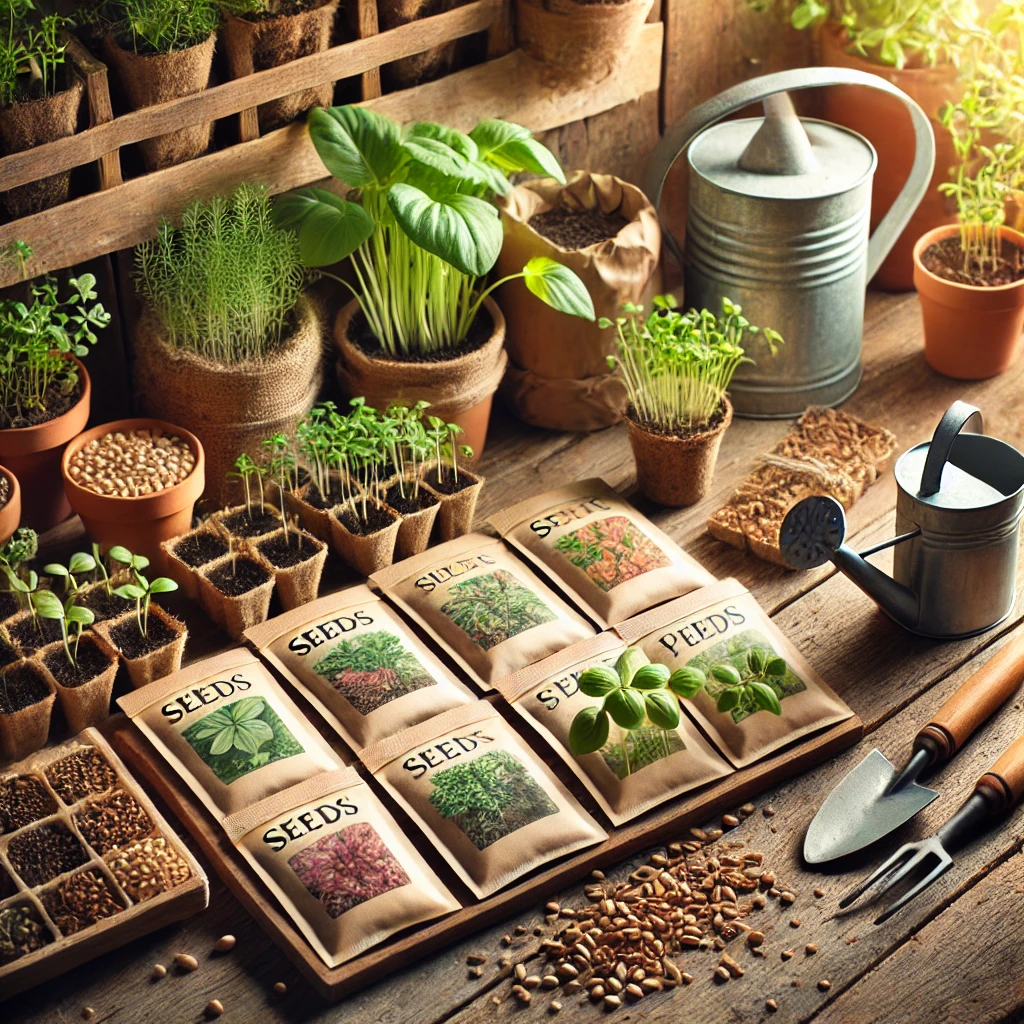Indoor plant seeds are a fantastic way to bring nature into your home while improving air quality and enhancing your living space. Growing plants from seeds allows you to experience the entire growth cycle and gives you complete control over their care. If you want to add lush greenery to your home, choosing the right indoor plant seeds is essential. In this guide, we’ll explore the best indoor plant seeds, their benefits, and how to grow them successfully.
Benefits of Growing Indoor Plant Seeds
Growing plants from indoor plant seeds is an enriching experience. Here are some of the key benefits:
- Cost-Effective: Seeds are much cheaper than purchasing fully grown plants.
- Greater Variety: You can find a wider selection of plants in seed form than in garden centers.
- Pesticide-Free: You have control over what goes into your soil and onto your plants.
- Sustainable: Growing from seeds reduces waste and transportation costs associated with buying mature plants.
- Therapeutic: Gardening is a relaxing activity that promotes mental well-being.
- Improves Indoor Air Quality: Many indoor plants help purify the air by removing toxins such as formaldehyde and benzene.
- Enhances Home Aesthetics: Greenery adds a touch of beauty and warmth to any indoor space.
How to Choose the Best Indoor Plant Seeds
When selecting indoor plant seeds, consider these factors:
- Light Requirements: Some plants thrive in low light, while others need bright, indirect light.
- Water Needs: Choose plants that match your watering habits.
- Growth Rate: Some plants grow faster than others, so consider how patient you are with the process.
- Aesthetic Appeal: Pick plants that match your interior decor.
- Space Availability: Some plants require more room to grow, while others are compact and ideal for small spaces.
Top 10 Indoor Plant Seeds for Your Home
1. Basil (Ocimum basilicum)
Basil is one of the easiest indoor plant seeds to grow. It thrives in warm conditions and needs plenty of sunlight. Perfect for culinary enthusiasts, fresh basil adds flavor to a variety of dishes. To grow basil successfully, plant the seeds in well-draining soil and keep them in a sunny window.
2. Lavender (Lavandula angustifolia)
Lavender not only adds beauty to your space but also provides a soothing aroma that promotes relaxation. It requires well-draining soil and plenty of sunlight to flourish. Lavender is also known for its ability to repel insects, making it a great addition to your home.
3. Peace Lily (Spathiphyllum)
Peace lilies are excellent indoor plants as they require minimal maintenance and help purify the air. These seeds need a warm and humid environment to germinate successfully. They are known to remove toxins like ammonia and formaldehyde from the air.
4. Aloe Vera (Aloe barbadensis miller)
Aloe vera is known for its medicinal properties and easy care. It prefers dry soil and bright, indirect light, making it an excellent choice for beginners. The gel from aloe vera leaves can be used to treat burns and skin irritations.
5. Spider Plant (Chlorophytum comosum)
Spider plants are hardy and adapt well to various indoor conditions. They are also excellent at removing toxins from the air. These plants produce small offshoots, or “babies,” that can be propagated easily.
6. Mint (Mentha)
Mint is a fragrant herb that grows well indoors. It requires regular watering and bright, indirect light to thrive. It’s a fantastic addition to your kitchen, allowing you to add fresh mint leaves to teas, salads, and desserts.
7. Snake Plant (Sansevieria trifasciata)
Snake plants are resilient and can survive with minimal care. They are ideal for beginners and contribute to better air quality. These plants thrive in low-light conditions and require very little watering.
8. Rosemary (Rosmarinus officinalis)
Rosemary is a fragrant herb that adds flavor to food and has numerous health benefits. It prefers well-draining soil and ample sunlight. Regular pruning encourages bushier growth, making it a great long-term indoor plant.
9. Chamomile (Matricaria chamomilla)
Chamomile is best known for its calming properties. Growing chamomile from seeds requires patience, but the rewards are worth it. You can use the dried flowers to make a soothing herbal tea.
10. Cilantro (Coriandrum sativum)
Cilantro is an easy-to-grow herb that enhances the flavor of various cuisines. It prefers cooler temperatures and indirect light. Regular harvesting encourages new growth, allowing you to enjoy fresh cilantro for months.

How to Grow Indoor Plant Seeds Successfully
Step 1: Choose the Right Containers
Use small pots or seed trays with drainage holes to prevent waterlogging. If using recycled containers, ensure they are clean and have proper drainage.
Step 2: Select High-Quality Soil
Use a light, well-draining potting mix that retains moisture but does not get soggy. Avoid garden soil, as it may contain pests or diseases.
Step 3: Provide Adequate Light
Most indoor plant seeds need bright, indirect sunlight. Consider using LED grow lights if natural light is limited. South-facing windows usually provide the best light conditions.
Step 4: Watering Techniques
Keep the soil consistently moist but avoid overwatering. Misting can help maintain humidity. Use room-temperature water to avoid shocking the roots.
Step 5: Monitor Growth
Regularly check for signs of growth and transplant seedlings to larger pots when necessary. Rotating pots ensures even exposure to light.
Common Mistakes to Avoid When Growing Indoor Plant Seeds
- Overwatering: This is a common issue that can lead to root rot.
- Poor Soil Choice: Use quality potting mix for better growth.
- Lack of Light: Ensure your plants get enough sunlight or use grow lights.
- Ignoring Temperature Needs: Some seeds need warm conditions to germinate properly.
- Skipping Fertilization: Provide essential nutrients to help plants grow strong.
- Planting Too Deep: Some seeds need to be lightly covered, while others require light exposure to germinate.
Additional Tips for a Thriving Indoor Garden
- Use Organic Fertilizers: Natural fertilizers like compost tea or seaweed extract help nourish plants without harmful chemicals.
- Maintain Proper Humidity: Some plants, such as ferns, thrive in higher humidity. A pebble tray or humidifier can help.
- Rotate Your Plants: Regularly rotating plants ensures they grow evenly and receive consistent light exposure.
- Check for Pests: Inspect plants regularly for pests like aphids or spider mites and treat them immediately with natural remedies.
Conclusion
Indoor plant seeds are an excellent choice for those looking to bring greenery into their homes while enjoying the process of growing plants from scratch. Whether you prefer herbs, flowers, or air-purifying plants, there is an indoor plant seed variety perfect for you. With the right care and environment, your indoor garden can thrive, bringing beauty and freshness to your living space. Start planting today and transform your home into a lush green oasis!
